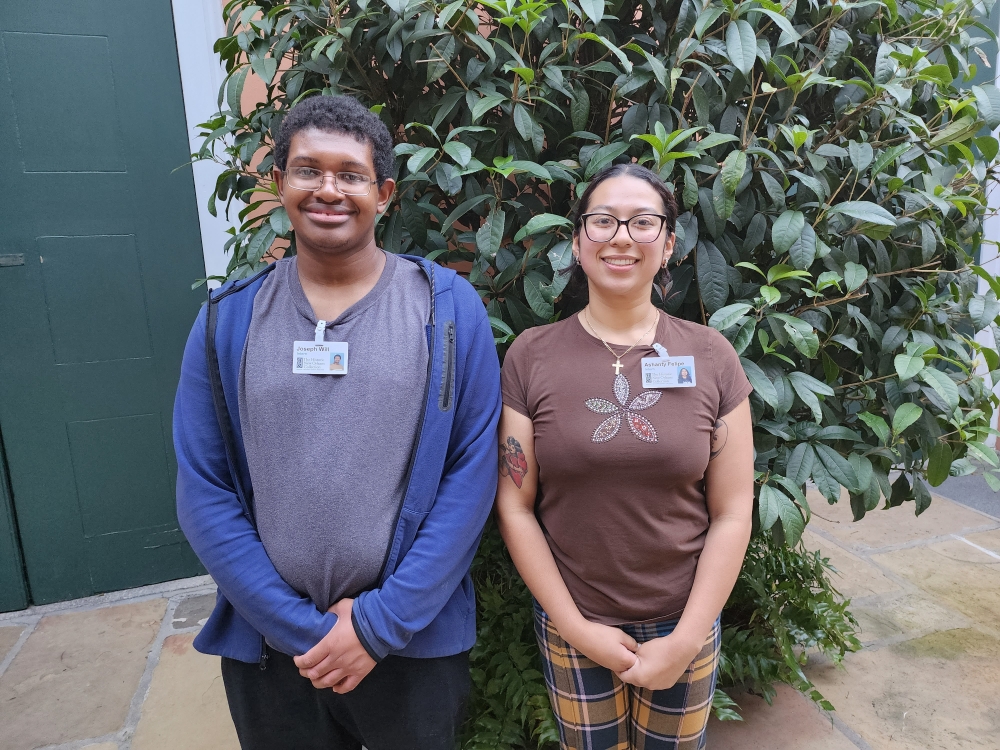Disclaimer: Recently acquired collections might not be immediately available to view online or in the Williams Research Center reading room. Researchers can inquire about availability via email.
Bunny Matthews's Vic and Nat'ly move to the French Quarter
Video explores women’s rights activism in New Orleans history
The 19th Amendment to the US Constitution extended the vote to American women in 1920. Its passage served as the crowning achievement of a decades-long struggle by women across the nation to be part of the democratic process.
Coming to New Orleans: A new series on the city’s diverse immigration history
New Orleans culture has long been characterized by its French and Spanish colonial history and its Black history, but its global connections and ethnic diversity go far beyond Europe, Africa, and the Caribbean.
Salazar's surprises: Lineages and legacies in the portraits of Spanish New Orleans's premier society painter
José Francisco Xavier de Salazar y Mendoza was the most significant artist in New Orleans during the Spanish colonial period. He was born on the Yucatán peninsula in the 1750s. Very little is known about his early life and training in Mexico. After moving to New Orleans with his family in 1782, he became a well-known portrait painter. His paintings, which feature prominent New Orleanians, provide a visual record of the city’s upper class in the late 18th and early 19th centuries.
Archive deep dive: Searching for the stories of Black craftspeople in New Orleans

Joseph Will (left) and Ashanty Felipe (Photograph by Sydney Wessinger for THNOC)
Gone medieval: How the Gothic Revival built Louisiana castles
In the 1850s, the Louisiana State House was likely the first landmark that riverboat travelers spied as they approached Baton Rouge. Hexagonal turrets, crenellated moldings, and a light exterior made the Gothic Revival capitol building a veritable riverfront castle. Architect James H. Dakin specifically chose this dramatic style to make Louisiana’s capitol building unique among the plethora of Greek Revival columned state houses elsewhere.
Portrait of the artist: The Lin Emery Papers
The Historic New Orleans Collection recently acquired the collection of internationally renowned kinetic sculptor Lin Emery (1926–2021). The collection, donated by her son, Brooks Emery Braselman, provides an intimate view of her long and prolific artistic career. The collection includes two finished sculptures—Gathering (2018), a wind-powered piece, and Medusa (ca. 2020), the last artwork she exhibited—along with sketches, technical schematics, and extensive photo and film documentation.
From the 19th century to the nine-nine: How Mannie Fresh, Juvenile, and Gottschalk brought New Orleans music to the world, 150 years apart
It’s been more than two decades since Cash Money Records took over for the nine-nine and the two thousand, but on any given weekend in New Orleans, someone somewhere is playing “Back That Azz Up.” The second single from Juvenile’s 400 Degreez, “Back That Azz Up”—and the radio-friendly edit “Back That Thang Up”—opens with strings.
Carnival couture: Eight Mardi Gras fashion designs inspired by history, pop culture, and even architecture
Fashion has played a role in the design of Carnival costumes since the early years of Mardi Gras. Costumers take inspiration from around the world, from history, from society, and from nature to create one-of-a-kind designs that honor the season’s spirit of extravagance and role-play.
